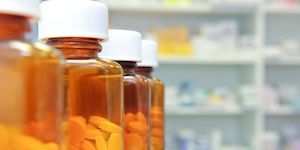Article
Hypogonadism Highly Prevalent among Men with Type 2 Diabetes
Author(s):
Study results show that more than one-third of men with diabetes have low serum testosterone levels, and that risk of low testosterone increases with age.

Hypogonadism is highly prevalent among men with type 2 diabetes mellitus (T2DM), according to research published in the Journal of Family & Community Medicine.
Researchers studied 1,089 men aged 30-70 years with T2DM that consecutively attended a major diabetes center in Jordan between August 2008 and February 2009. Participants were evaluated via a questionnaire that covered duration of diabetes, smoking habits, presence of retinopathy, neuropathy, and nephropathy. Participants also completed the Androgen Deficiency in Ageing Male (ADAM) questionnaire. Blood samples were collected from each patient after an overnight fast, which investigators used to measure total testosterone (TT), free testosterone (FT), sex hormone binding globulin (SHBG), follicle-stimulating hormone (FSH), luteinizing hormone (LH), prolactin (PRL), serum lipids, and glycosylated hemoglobin (HbA1c).
The mean BMI was 29.9 +/- 5.2 kg/m2 and scientists noted 43.8% and 39.3% of diabetics were obese and overweight, respectively. More than half of the patients (58.7%) were on a combination of oral antidiabetic agents and insulin, 88.3% were on statins, and 69.2% were on antihypertensive treatment.
Scientists concluded 36.5% of patients with T2DM had TT levels < 3 ng/ml (defined for the study as low serum testosterone). From this group, 80.2% had symptoms of androgen deficiency, 16.9% had primary hypogonadism (HG), and 83.1% had secondary HG. Overall, androgen deficiency was prevalent among 29% of participants.
Investigators found a significant relationship between age, income, education, body mass index (BMI), smoking, duration of diabetes, diabetic nephropathy, diabetic neuropathy, and HbA1c. Independent risk factors for low serum testosterone (LST) included age, income, BMI, and diabetic neuropathy.
The results indicate that TT, FT, and SHBG decrease with age, which is in line with other results from around the globe. In Australia, researchers found 43% of T2DM patients had TT levels < 10 nmol/l. A study from the United Kingdom revealed 17% of men over 30 with T2DM had HG with TT < 8 nmol/l. Researchers in Egypt concluded 33.2% HG in T2DM patients, and in Brazil FT and TT levels were subnormal in 46% and 34% of diabetics, respectively.
“Our study found a significant association between TT and age,” the authors wrote.“A higher prevalence of low TT was seen in men aged between 60 and 70 years, which is in agreement with the previous finding that HG was frequently associated with T2DM, at least in the 6th decade. In this study, there was a lower prevalence in age group 30-39. The frequency of diabetes with HG in those aged less than 40 years could be due to the fact that most diabetic patients in this age group have Type 1, and not T2DM.”
The researchers noted they were unable to determine if LST preceded a T2DM diagnosis, though “the number of diabetic patients with LST is undoubtedly enormous.” They, along with The Endocrine Society, recommend hormonal baseline screenings so that comparisons can be made in the future.




